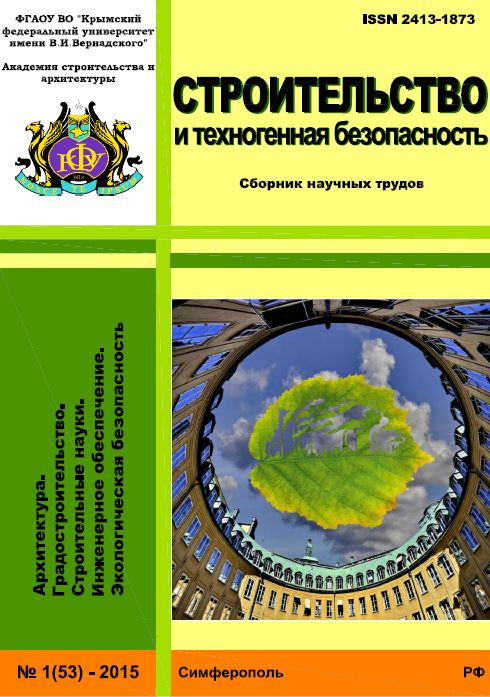Simferopol, Russian Federation
Simferopol, Russian Federation
Simferopol, Russian Federation
this article is devoted to the development of compositions of raw materials mixtures for the production of Portland cement clinker based on waste from the extraction of diabase rocks, which are a by-product in the production of non-metallic building materials from natural diabase stone. Subject of the study: the possibility of using waste from washing diabase rocks as clay raw materials in mixtures for the production of Portland cement clinker. Materials and methods: several groups of raw materials were used as objects of research: as clay raw materials – waste from washing diabase rocks formed at an enterprise for the production of non–metallic building materials; as carbonate raw materials – limestones from Crimean deposits; corrective additive - quartz sand from the Kazantip deposit. The raw materials were studied using modern methods of studying chemical and phase-mineralogical composition, and granulometry. Using standard methods for calculating the composition of the raw material mixture for the production of Portland cement clinker, the calculation was performed and the compositions were adjusted. Results: the calculation of two-component mixtures consisting of clay and carbonate raw materials with a given saturation coefficient of 0.9 showed that the values of the silicate modulus do not meet the required limits. For compliance, it is necessary to introduce a corrective silica additive, which was selected as quartz sand from the Kazantip deposit with a SiO2 content of 96.24%. The compositions of three-component mixtures are calculated, for which the values of the saturation coefficient and modules correspond to the required intervals. Conclusions: it has been established that raw material mixtures consisting of waste from washing diabase rocks as a clay component, limestone from the Ulyanovsk deposit as a carbonate component, and quartz sand from the Kazantip deposit theoretically meet the requirements for raw cement mixtures in terms of saturation coefficients, silicate and alumina modules.
waste from the processing of diabase rocks, Portland cement clinker, saturation coefficient, silicate modulus
1. United Nations. World population prospects – population division – United Nations. – https://population.un.org/wpp/(2022).
2. IEA, 2018. IEA and WBCSD: technology roadmap: low carbon transition in the cement industry.
3. W. Xing, V.W. Tam, K.N. Le, J.L. Hao, J. Wang. Life cycle assessment of sustainable concrete with recycled aggregate and supplementary cementitious materials //Resources, Conservation and Recycling. – Vol. 193.
4. Olsson J. A., Miller S. A., Kneifel J. D. A review of current practice for life cycle assessment of cement and concrete // Resources, Conservation and Recycling. – Vol. 206. – 2024. – 107619.
5. Aı̈tcin P.-C. Cements of yesterday and today: Concrete of tomorrow // Cement and Concrete Research. – 2000. – Vol. 30. – Issue 9. – Pp. 1349-1359.
6. Sui H., Hou P., Liu Y., Sagoe-Crentsil K., Basquiroto de Souza F., Duan, W. Limestone calcined clay cement: Mechanical properties, crystallography, and microstructure development // Journal of Sustainable
7. Huang G., Liu Y., Benn T., Luo L., Xie T., Zhuge Y. A Comprehensive Framework for the Design and Optimisation of Limestone-Calcined Clay Cement: Integrating Mechanical, Environmental, and Financial
8. Update on China, April 2024. – https://www.globalcement.com/news/item/17192-update-on-china-april-2024.
9. Mohamad N., Muthusamy K., Embong R., Kusbiantoro A., Hashim M.H. Environmental impact of cement production and solutions: A review // Materials Today: Proceedings. – 2022. – Vol. 48. – Part. 4. – Pp. 741
10. Cementnoe obozrenie. Dekabr' 2023 goda. Soyuzcement. – https://soyuzcem.ru/analytics/.
11. Scrivener K.L., John V.M., Gartner E.M. Eco-efficient cements: Potential economically viable solutions for a low-CO2 cement-based materials industry // Cement and Concrete Research. – 2018 – Vol.114.– Pp.2-26.
12. Bhagath Singh G.V.P., Subramaniam Kolluru V.L. Production and characterization of low-energy Portland composite cement from post-industrial waste // Journal of Cleaner Production. – 2019. – Vol. 239. – 118024.
13. Imbabi M.S., Carrigan C., McKenna S. Trends and developments in green cement and concrete technology // International Journal of Sustainable Built Environment. – Vol. 1. – Issue 2. – 2012 – Pp. 194-216 –
14. Dvorkin L.I., Stroitel'nye mineral'nye vyazhuschie materialy / L.I. Dvorkin, O.L. Dvorkin. – M.: Infra-Inzheneriya, 2011. – 544 s.
15. Butt Yu.M. Tehnologiya vyazhuschih veschestv / Butt Yu.M.; Okorokov S.D.; Sychev M.M. i dr. // Izd-vo: M.: Vysshaya shkola, 1965. – 616 s.
16. Spravochnik po proizvodstvu cementa. Pod red. I.I. Holina. – M.: 1963. – 833 s.





